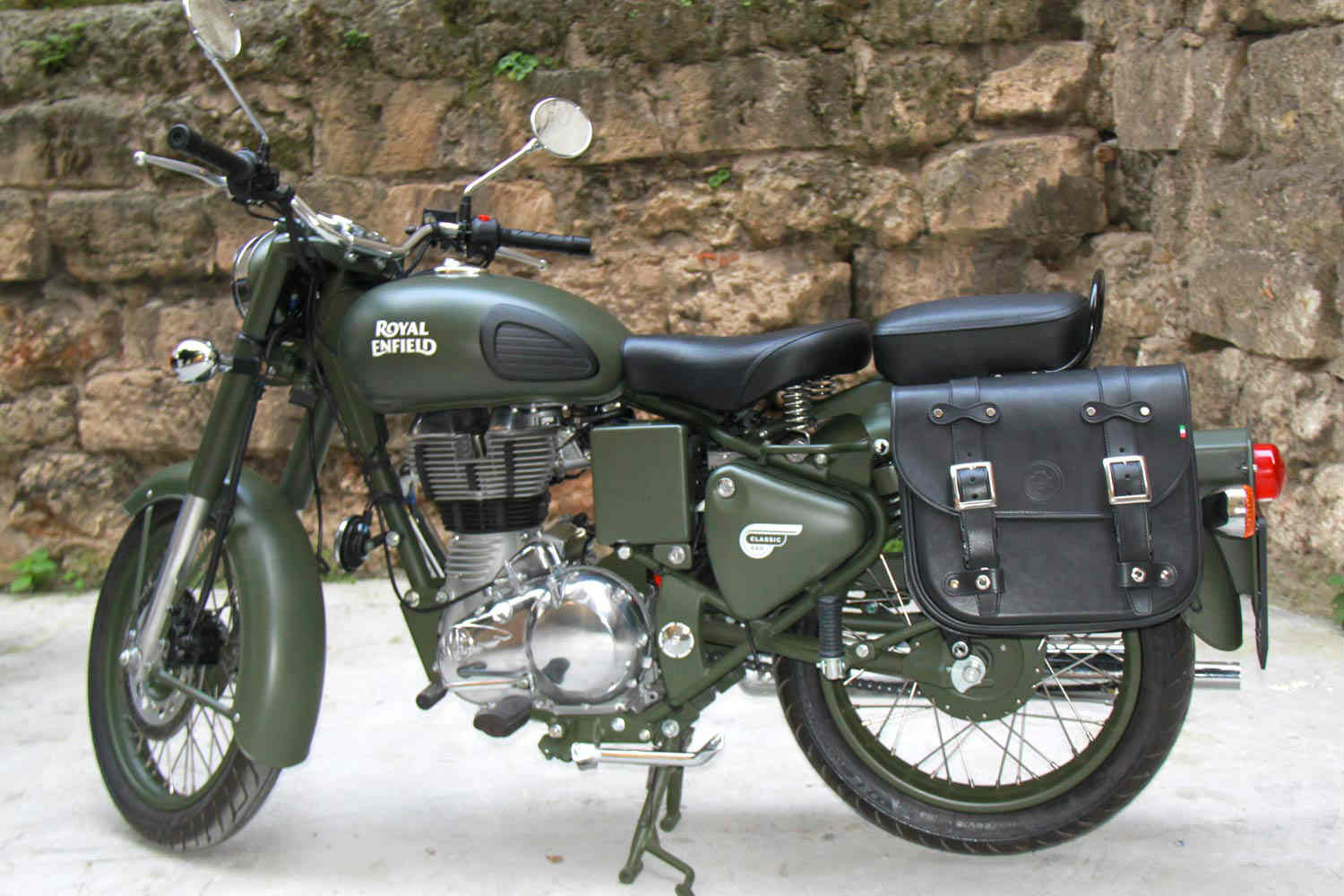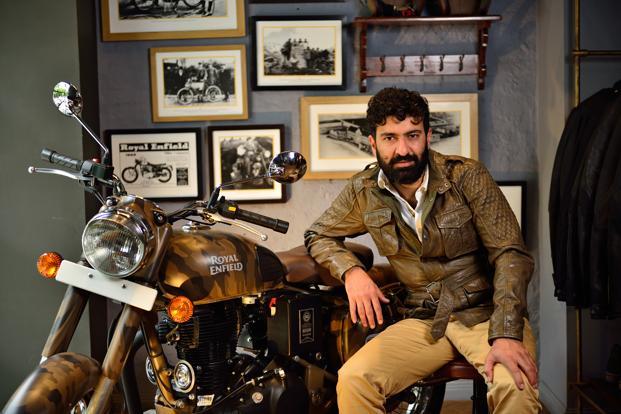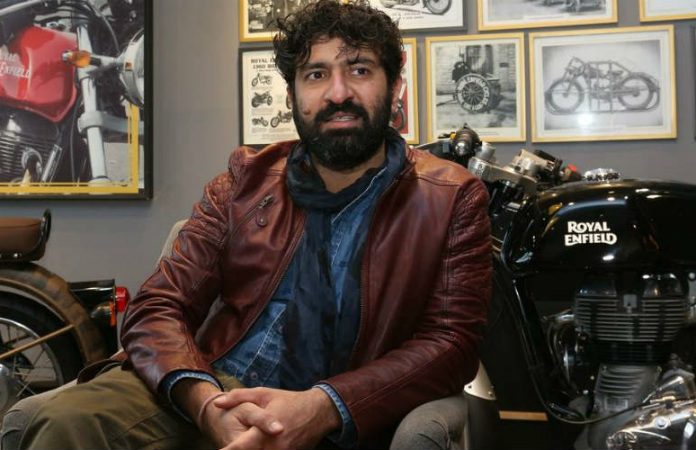Siddhartha Lal isn’t given to false appearances. As custodian of Royal Enfield – the world’s oldest motorcycle brand – he wears a heavy crown, but you wouldn’t know it by looking at him. In any other scenario, an entrepreneur of his heft would choose a relatively sombre setting for a rendezvous point. Not Lal, who prefers to meet at Royal Enfield’s apparel store in Khan Market, New Delhi. He casually strolls in, dressed in an RE branded T-shirt, gladiator sandals and camo joggers, sporting his trademark curls with facial scruff that appears to have been nurtured over a long, contemplative cross-country motorcycle trip.

The store itself has a traditional British biker café aesthetic, though Lal informs me that there was a time when the average Royal Enfield showroom wasn’t much more than bricks and mortar, with a couple of chairs thrown in. It’s hard to picture such a dystopian setup. There’s a glistening, bobber-style custom bike propped atop a large marble counter, flanked on all sides by the latest Royal Enfield merchandise, apparel and accessories that milk over a century’s worth of classic British motorcycling glory. This is just one of 675 Royal Enfield stores across the country. The subtext? Business is good.
So good in fact, that the grapevine is replete with rumours of Royal Enfield buying out Ducati from VW. (No source from RE has confirmed or denied this, and any further developments are yet to occur). Only time will reveal whether there’s any truth to these rumours, but even then, one thing remains clear – Royal Enfield is the strongest it has ever been, if it can be considered an alleged frontrunner for buying out a profitable bike brand making some of the most technologically sophisticated motorcycles in the world.

Royal Enfield’s resurgence as one of the fastest growing motorcycle brands in the world is a matter of public record. Though he insists that it’s been a team effort, it was upon Lal’s insistence that his family – owners of the Eicher group – decided to sell 15 mid-level businesses and make Royal Enfield, an ailing, colonial relic they’d acquired in the early Nineties, their core business. Lal’s tale reads like that of a coming-of-age trade paperback, of a 26-year-old scion rediscovering the near-forgotten charms of his inheritance on a backpacking trip across Europe. “I did a month-and-a-half in Europe, borrowing one of our UK distributors’ 500cc Bullets, with a tent and a backpack. I’d got the bug. But it wasn’t translating to the wider public, which was going after cheaper and more efficient transport.”
Related Post: 11 Heroes who helped build the Indian startup industry
Armed with an Economics degree from St Stephen’s in Delhi, along with a post-graduate diploma in Mechanical Engineering and in Automotive Engineering, Lal took over as CEO in 2000, at an age when most men are still lying in the cosy refuge of boyhood. He immediately decided to overhaul the sales and distribution network, oversaw mechanical upgrades, got rid of the cast-iron engine and switched to more reliable global parts suppliers.
An argument can be made that Lal was fortunate enough to inherit one of the most historically significant motorcycling brands in the world. Towards the second half of the 20th century, the Royal Enfield Bullet had been carried over to post-colonial India in a way that gives us greater claim over it than the British today. No motorcycle has since held office as such an equalising force – available to the local milkman, the military orderly and the landed gentry of the country in the same form. But no brand, not even Royal Enfield, could counter the tide of technological developments from cheaper and more reliable Japanese motorcycles that emerged in the late Eighties and Nineties.

“We’ve all seen a lot of prestige brands turn to dust in the past,” reflects Lal, wary of the perils of solely relying on the motorcycle’s unique appeal, one that’s inseparable from its original, unaltered form. If Royal Enfield, as a brand, had to survive, it was clear that piggybacking on past glory wasn’t an option; new machines and models had to be introduced.
Seventeen years later, the RE roster looks more wholesome than ever. It’s enjoyed its most successful year, having sold over 6,66,000 motorcycles globally. The Himalayan is its first ground-up product to be developed in tandem with it latest acquisition, British performance motorcycling outfit Harris Performance, which it bought in 2015. Having navigated past the choppy seas of the first phase of the brand’s business model, Lal is now placing the future front and centre, his recent shifting of base to London signifying the unfolding of a much larger plan.

Is it to formally herald his brand’s arrival as a global player? “Actually, our intent was to bring these guys [the Harris Performance team] over to Chennai. But it would have been a very sudden change in their environment,” says Lal, under whose steerage the brand surpassed Harley-Davidson in global sales back in 2014. If he harbours any plans for global conquest, his bohemian demeanour doesn’t betray it for a second. “We don’t like to go after brands. We’d like to stay as far away from them as possible. I think most automotive brands are very unidimensional,” he adds, with the boyish air of someone perfectly content playing inside his own sandbox. Said sandbox being RE’s latest tech centre in Leicestershire, UK, complete with its own massive test track.
Related Post: 4 greatest Indian entrepreneurs from the history we need to glorify
2015 marked a turning point for RE, with its intellectual nucleus now based out of the UK. “Product development, product strategy and the design chiefs sit in the UK, while the manufacturing team sits in Chennai. But the whole operation is very synergistic. They’re not building stuff that won’t translate into something feasible for the Indian market.” Exactly what’s next has generated quite a buzz in the Indian market, given that the Himalayan – RE’s most recent success – was designed, chassis and all, for the Indian market and riding conditions.
With the grapevine buzzing with news of an upcoming project being launched in international markets first, has RE’s strategy been reversed? “Anything we do in the future will be designed for India as well as the international markets,” he says, remaining wryly tight-lipped about the alleged twin-cylinder motorcycle that’s next on the calendar.

“We’re working on a properly highway-worthy motorcycle,” he continues, leaving me to read the fine print. “It’s bigger than what we have, and will be able to keep up in faster countries. For now it’s Thailand, Brazil, Indonesia and Colombia.” That said, he isn’t one to stay clear of bigger, daunting markets like the US and the UK, contending that operating in those markets helps buff up the brand’s halo.
Related Post: These 13 successful Indian college dropout entrepreneurs prove that college is not necessary for success
For now, Lal’s focus lies entirely on the middle-weight space, which, according to him, is underserved the world over. “250-750cc is the area we will operate in for the foreseeable future. We wish to be the definitive player in the middle-weight space. And we want to get there in our own way,” he says with resounding conviction, also expressing interest in producing factory-built scrambler, tracker and other denominations of the brand’s Classic 350 and 500.

Yet, Lal, at his core, is a motorcyclist. More than creating new motorcycles, he’s fostering a motorcycling culture, and emphasises his commitment to sustain the ecosystem that’s been built around the brand. This includes everything from guided motorcycle tours to a full-blown apparel catalogue. “We’ve got a full team working on only accessories now. Last year, there was just one guy.”
Related Post: 9 women entrepreneurs who continue to inspire us


























































